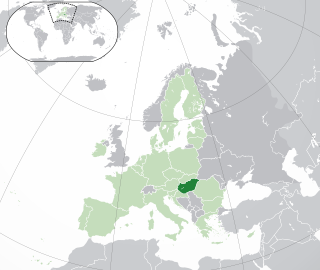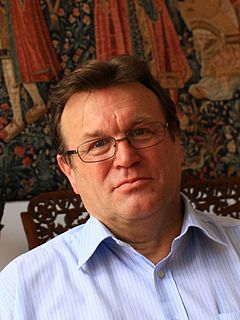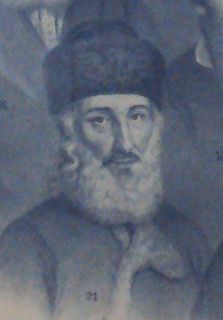Related Research Articles

Győr is the most important city of northwest Hungary, the capital of Győr-Moson-Sopron County and Western Transdanubia region, and – halfway between Budapest and Vienna – situated on one of the important roads of Central Europe. It is the sixth largest city in Hungary, and one of its seven main regional centres. A city with county rights.
A number of public holidays and special events take place each year in Hungary.

Moses Schreiber (1762–1839), known to his own community and Jewish posterity in the Hebrew translation as Moshe Sofer, also known by his main work Chatam Sofer, Chasam Sofer, or Hatam Sofer, was one of the leading Orthodox rabbis of European Jewry in the first half of the nineteenth century.
Isaac ben Moses of Vienna, also called Isaac Or Zarua or the Riaz, was among the greatest rabbis of the Middle Ages. He was probably born in Bohemia and lived between 1200 and 1270. He attained his fame in Vienna and his major work, the halachic guide known as the Or Zarua, was very popular among Ashkenazic Jewry. He was a member of the Chassidei Ashkenaz and studied under many scholars, including the Ra'avyah, Rabbi Yehudah HaChasid, the Sar mi'Kutzi and Rabbi Elazar Rokeach. He was among the teachers of Rabbi Meir of Rothenburg.

The history of the Jews in Hungary dates back to at least the Kingdom of Hungary, with some records even predating the Hungarian conquest of the Carpathian Basin in 895 CE by over 600 years. Written sources prove that Jewish communities lived in the medieval Kingdom of Hungary and it is even assumed that several sections of the heterogeneous Hungarian tribes practiced Judaism. Jewish officials served the king during the early 13th century reign of Andrew II. From the second part of the 13th century, the general religious tolerance decreased and Hungary's policies became similar to the treatment of the Jewish population in Western Europe.

Judah Leib "Leopold" Löw was a Hungarian rabbi, regarded as the most important figure of Neolog Judaism.
The Jewish family Auerbach, Авербах of the 16th to 19th century was a family of scholars, the progenitor of which was Moses Auerbach, born around 1462, court Jew to the bishop of Regensburg as of around 1497. One of his daughters, who went to Kraków after her marriage, is the reputed ancestress of the celebrated Rabbi Moses Isserles. The Auerbach family gained Court Jew status and later nobility titles under the Habsburg monarchy. The name, Auerbach means, "the stream that comes from the meadow, meadow brook". Auerbach is the name of several places in Southern German.
Moshe Schick was a prominent Hungarian Orthodox rabbi. In rabbinical commentary Shik is commonly known as the Maharam Schick ; Maharam is the Hebrew acronym for Moreinu Harav Moshe, which means "Our Teacher Rabbi Moses".

The Budapest University of Jewish Studies is a university in Budapest, Hungary. It was opened in 1877, a few decades after the first European rabbinical seminaries had been built in Padua, Metz, Paris and Breslau. Still, it remains the oldest existing institution in the world where rabbis are graduated.

Lipót Baumhorn was a Hungarian architect of Jewish heritage, the most influential Hungarian synagogue architect in the first half of the 20th century. He drew blueprints for about 20 synagogues in the Kingdom of Hungary.

Wilhelm Bacher was a Jewish Hungarian scholar, rabbi, Orientalist and linguist, born in Liptó-Szent-Miklós, Hungary to the Hebrew writer Simon Bacher. Wilhelm was himself a prolific writer, authoring or co-authoring approximately 750 works. He was a contributor to many encyclopedias, and was a major contributor to the landmark Jewish Encyclopedia throughout all its 12 volumes. Although almost all of Bacher's works were written in German or Hungarian, at the urging of Hayyim Nahman Bialik many were subsequently translated into Hebrew by Alexander Siskind Rabinovitz.
Samuel Löw Brill was a Hungarian rabbi and Talmudical scholar born in Budapest. He was educated by his father, Azriel Brill (1778-1853), who was teacher and associate rabbi at Pest, Hungary, and the author of several works in the Hebrew language. After having been carefully grounded at home in Hebrew studies, and graduating with honors from the Protestant Lyceum of his native city, he attended the Talmud schools at Eisenstadt (1832) [under M. J. Perls], Presburg (1834–35) [under Moses Sofer], and Prague (1836), where he obtained, at the age of twenty-two, his rabbinical degree. In 1842-43 he was registered in the University of Berlin, where he attended the courses of famous teachers, such as Boeckh, the classical philologist, Ritter, the geographer, Leopold Ranke, the historian, Schelling, and others, and associated with Leopold Zunz and Michael Sachs.
Joseph Bach was a Hungarian rabbi. After I. N. Mannheimer, he was the first German preacher of a Jewish congregation in Austria-Hungary.
Simon Bacher, born Shimon ben Yitzḥak Bacharach, was a Hungarian Jewish Hebrew poet.

The city of Budapest was officially created on 17 November 1873 from a merger of the three neighboring cities of Pest, Buda and Óbuda. Smaller towns on the outskirts of the original city were amalgamated into Greater Budapest in 1950. The origins of Budapest can be traced to Celts who occupied the plains of Hungary in the 4th century BC. The area was later conquered by the Roman Empire, which established the fortress and town of Aquincum on the site of today's Budapest around AD 100. The Romans were expelled in the 5th century by the Huns, who were challenged by various tribes during the next several centuries. The Hungarian conquest of the Carpathian Basin started at the end of the 9th century, and the Kingdom of Hungary was established at the end of the 11th century.

Dénes Gulyás is a Hungarian tenor. A native of Budapest, he studied at the Franz Liszt Academy of Music in that city. He had an international career in the 1970s, and sang at the Metropolitan Opera, among other houses; one of his performances there, a Manon in which he replaced Neil Shicoff as Des Grieux to the Manon of Catherine Malfitano, was broadcast live as part of the company's Saturday radio broadcast series.

Immanuel Löw was a Hungarian rabbi and scholar, botanist and politician.

The Church of Jesus Christ of Latter-day Saints in Hungary refers to The Church of Jesus Christ of Latter-day Saints and its members in Hungary. In 1990, there were 75 members in Hungary. In December of 2019, there were 5,231 members in 22 congregations.

Zoltán Felvinczi Takács was a Hungarian art historian. His research interests include the paintings of Albrecht Dürer, Oriental art, and art criticism.

Moses Münz, also known as Maharam Mintz was a Hungarian rabbi. He served as chief rabbi of Alt-Ofen (Óbuda) from 1790 until his death.
References
 This article incorporates text from a publication now in the public domain : Singer, Isidore; et al., eds. (1901–1906). The Jewish Encyclopedia . New York: Funk & Wagnalls.
This article incorporates text from a publication now in the public domain : Singer, Isidore; et al., eds. (1901–1906). The Jewish Encyclopedia . New York: Funk & Wagnalls.{{cite encyclopedia}}: Missing or empty|title=(help)